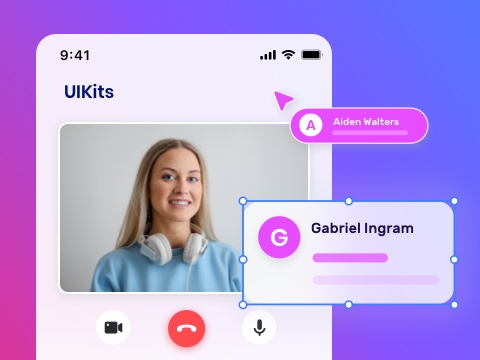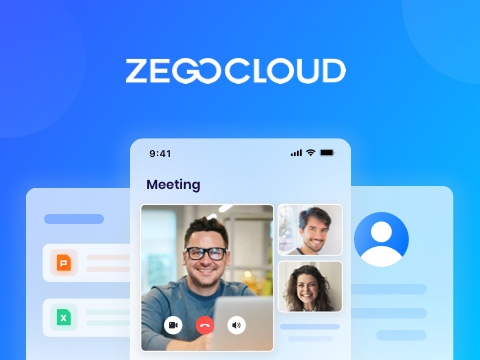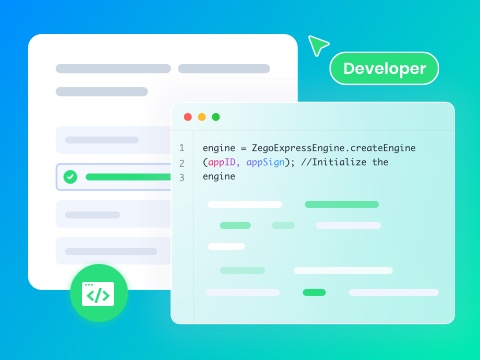Have you ever wondered how a live event is streamed on TV and online at the same time? If not, know that an approach known as Simulcast, a short form of “simultaneous broadcast,” makes this possible by airing the same media across platforms. So, as a streamer or broadcaster, if you seek to know more about this broadcasting technique, this guide has got you covered.
What is Simulcast?
Many people are concerned about simulcast meaning, not knowing that this term is a mixture of two words, “simultaneous” and “broadcast.” At first, this term was used in the mid-20th century by the radio and TV industries when the same show appeared on TV and radio. However, nowadays, this term is famous for digital streaming and is helping creators share content across services.
Simply put, streaming the same content on different platforms like YouTube, Facebook, Twitch, and more is called Simulcast. The primary significance of this technique is that it saves the hassle of streaming separately to each platform. Hence, this not only conserves time and resources but also boosts audience reach and engagement.
How Does Simulcast Work?
When people ask streamers to “define simulcast,” the only answer is to show them how this technique works. Therefore, if you are among those streamers seeking answers, dive into the given details, highlighting the simulcast working:
1. Single Video Source (Input to Encoder)
To start with, the broadcaster records the live stream by using a camera or software like OBS, Streamlabs, or vMix. After recording, the streamers convert the live content into a digital format, making it suitable for streaming. However, know that at this point, the recorded data is raw and can’t be directly simulated across the platforms.
2. Encoding and Compression
At this stage, the video is passed through the “Encoder,” whether it’s hardware or software-based. Regardless of the type, the encoder compresses the video using codecs like H.264 or H.265 to turn large videos into streamable data.
Hence, know that this process also involves setting the bitrate, resolution, and frame rate. This affects the quality and stability of your stream depending on your internet speed and the audience’s devices.
3. Transmission via Streaming Protocols
Furthermore, for simulcast, the encoded video is ready to be sent to the destination by using the following streaming protocols:
- RTMP (Real-Time Messaging Protocol): Among all, this is the most used protocol and is mainly supported by streaming platforms like YouTube, Facebook, and Twitch.
- SRT (Secure Reliable Transport): On the contrary, SRT is newer and more stable, mainly in low-bandwidth or high-latency networks.
- RTSP or HLS: This type of streaming protocol, on the other hand, is used occasionally in advanced setups.
Thus, regardless of the protocol one opts for, they act as a bridge to deliver the stream to the cloud or distribution service.
You may also like: RTMP vs HLS vs WebRTC: Which is the Best Live Streaming Protocol?
4. Cloud-Based Simulcast Management
Hence, this is where simulcasting happens, where streamers send the stream to the given cloud-based simulcasting platforms:
- Restream
- Castr
- StreamYard
- OneStream Live
Streamers tend to avoid sending them to individual ones because they consume a lot of bandwidth, leading to lower internet speeds and increased CPU load. Now, after sending the stream to these platforms, they duplicate the stream and send it to streaming platforms like YouTube, Facebook, LinkedIn, Twitch, etc. Know that this offloads the technical and bandwidth load from the system to the cloud, making the process efficient.
5. Platform Transcoding (Optional)
While knowing “what is simulate,” remember that this is not where the process ends. Here, platforms like YouTube and Twitch transcode the stream after receiving it. This means that they convert the stream into multiple quality levels, like 1080p, 720p, and 480p.
So, since not all platforms offer this, it gives the audience the option to pick the quality that suits their needs. Many also provide unified chat tools to manage audience interaction across all platforms from one place.
3 Benefits of Simulcasting
Streamers, mainly beginners, do not know that simulcasting is advantageous rather than putting effort into streaming content individually across platforms. Therefore, the following points will highlight the significance of these broadcasting terms, helping them make the right choice:
- Reach More People Easily: According to Restream, the average growth of simulcasting creators over 1-2 years was 503%. This is 6X more than single-channel streamers, clearly stating that simulcasting consolidates and broadens your audience.
- Save Time and Effort: Furthermore, this broadcasting approach saves valuable time and resources while allowing you to focus on content creation and audience engagement. As noted by Enveu, simulcasting saves you time and money on developing unique content for each channel.
- Better Audience Interaction: Based on some sources, Restream offers comprehensive multi-streaming capabilities, supporting over 30 platforms. Additionally, they have integrated a chat feature that lets streamers engage with their entire audience seamlessly. Thus, this demonstrates that simulcasting centralizes audience interaction, making real-time responses more manageable.
Examples of Simulcasts in Different Industries
When one knows “what does simulcast means,” one begins to see how widely it is used across the industry. Hence, for a better understanding, the following points will highlight how it plays a major role in various professional fields:
1. Entertainment & Media
Television networks and media platforms simulcast major events such as the Super Bowl and the Oscars. This is done by transmitting a single high-definition video feed through both traditional cable/satellite systems and digital streaming platforms. Additionally, advanced encoding and adaptive bitrate streaming ensure smooth playback while synchronizing shows across platforms.
2. Gaming & Esports
Esports events and streamers use broadcasting tools like OBS or XSplit to encode gameplay. Furthermore, they then relay it via RTMP to a cloud-based simulcasting service such as Restream. This service then transcodes the feed for platforms like Twitch and YouTube while offering a chat facility for audience engagement.
3. Education & Online Learning
When one has to define simulcasting, one can ask others to observe its usage in virtual classrooms. Hence, to explain further, educators often simulcast through platforms supporting RTMP and WebRTC protocols. For that, tools like Zoom or StreamYard offer features like screen sharing and chat moderation while distributing the same stream to YouTube and other platforms.
4. Religious Services
Besides the educational sectors, churches often use hardware encoders or software like Wirecast to capture multi-camera feeds. These are then divided across various streaming platforms while following audio mixing and stream scheduling techniques. Later, this enables both live attendance and archived replays with closed captions for accessibility.
5. Corporate Events & Conferences
Finally, companies simulcast keynotes and internal events using enterprise-level platforms like Vimeo Live, Microsoft Teams, or LinkedIn Live. Notably, these systems use SRT or RTMPS protocols for secure, low-latency delivery, with built-in analytics dashboards and chat moderation. This helps them maintain professionalism across platforms while ensuring smooth streaming without any hindrance.
Simulcasting vs Multicasting vs Standard Streaming
Simulcasting meaning becomes clearer when it’s compared to other casting techniques like multicasting and standard streaming. So, for that, the table below compares these terms in detail while defining and explaining each of them:
| Feature | Simulcasting | Multicasting | Standard Streaming |
|---|---|---|---|
| Definition | Broadcasting the same stream to multiple platforms at once. | Sending one stream to multiple recipients on the same network. | Sending a single stream to a single platform or user base. |
| Use Case | Multi-platform content delivery (e.g., YouTube + Facebook) | Efficient internal network delivery (e.g., IPTV in corporations) | Direct streaming on one platform (e.g., Twitch or Netflix) |
| Delivery Method | Multiple streams via RTMP/RTMPS through cloud simulcast tools. | One stream over a multicast IP address using UDP. | One stream per user/device using unicast protocols. |
| Bandwidth Efficiency | Moderate simulcast uses multiple outgoing streams to platforms. | High, single stream replicated by the network. | Low consumes more bandwidth as the user count increases. |
| Protocols Used | RTMP, HLS, SRT, WebRTC, RTMPS. | UDP with IGMP or PIM. | RTMP, HLS, DASH, WebRTC |
| Requires Special Network | No, works over the public internet. | Yes, requires multicast-enabled routers and switches. | No, works over the public internet. |
| Latency | Moderate to low, depending on the platform and encoder. | Low, efficient over local networks | Varies, can be higher due to platform buffering |
| Scalability | Highly scalable through cloud platforms. | Very high, highly efficient on local networks. | Limited, each additional user adds load to the server. |
| Cost | When learning what simulcasting is, know that its cost is medium, with cloud service fees for multistreaming. | Low after initial infrastructure setup. | Varies depend on hosting and CDN usage. |
| Ideal For | Content creators, marketers, and broadcasters. | Closed networks like schools, corporations, and ISPs. | General streaming to a single audience. |
| Examples | Restream, StreamYard, OneStream Live | Enterprise IPTV, live CCTV feeds | YouTube Live, Twitch, Facebook Live |
How to Simulcast: Step-by-Step Guide
When amateur broadcasters have to simulcast, they usually think it’s a hectic job requiring a lot of technical expertise. Therefore, to determine whether it’s true or not, here is the detailed guidance on how to simulcast:
1. Set Up Your Video Source
Start with a solid video and audio setup by having high-definition webcams, DSLR cameras, or even smartphones paired with good lighting and audio gear. Additionally, you need to have a USB or XLR microphone connected via an audio interface or mixer.
This equipment will aid you in having better sound quality once you have live streaming software like OBS Studio, Streamlabs, or vMix to manage input sources and encode video.
2. Choose a Simulcasting Platform
Know that while simulcasting, you also must manage a third-party platform that can distribute streams to multiple destinations at once. Here, services like Restream, OneStream Live, StreamYard, and Castr are some of the best options to choose from. These platforms support integration through RTMP keys or direct platform logins, depending on your preference and technical skill.
3. Connect and Configure Destinations
While knowing the simulcast’s meaning and how it works, linking all the platforms where you want to stream is the next step. Therefore, you either need to log in to streaming accounts via simulcasting services or manually enter the RTMP stream URL and stream key.
While doing so, each destination requires specific titles, thumbnails, or stream settings. Remember that you can manage these metrics from a central dashboard within the Simulcast tool.
4. Configure Your Streaming Software
Once the broadcaster links the destination, they have to connect the streaming software, like OBS, to the simulcasting platform. Furthermore, in the settings, pick “Custom RTMP” and paste in the RTMP URL and stream key that your simulcast service gives you. Moreover, to ensure your content is encoded efficiently and is compatible, optimize output settings as follows:
- Bitrate: 3000 – 6000 Kbps for 1080p
- Encoder: Hardware (NVENC) or software (x264)
- Resolution: 1920×1080
- Keyframe Interval: 2 seconds (standard for most platforms)
- Frame Rate: 30 – 60 fps
5. Go Live and Monitor in Real Time
After doing so, start the streaming by picking the “Start Streaming” option from your encoder. Thus, that stream will go to the simulcast platform, which will then broadcast it to selected destinations at once. From the dashboard of the simulcasting service, you can monitor metrics like stream health or view counts.
6. Post-Stream Actions and Analytics
Lastly, the chosen simulcasting services then save the recorded stream automatically, allowing you to save and restream later. At this stage, use the post-stream analytics to evaluate performance across platforms. Moreover, you can repurpose the full stream into shorter highlight clips, stories, or reels to maximize content value across platforms.
Using ZEGOCLOUD to Enable Simulcast in Your App
Among many simulcasting services, ZEGOCLOUD is a renowned platform that features Scalable Video Coding (SVC). This feature aids the streamers in sending multiple layers of a single video stream in different resolutions and bitrates. It leverages the widely supported H.264 video codec, which ensures compatibility across various devices and platforms. With this, developers can encode video once and transmit up to three sub-streams in 180p, 360p, and 720p.
Additionally, to simulcast, the platform includes automatic resolution fallback, where the ZEGOCLOUD Live Streaming SDK detects real-time changes in network conditions. Afterward, the SDK instantly switches the viewer to the best available stream layer. Then, this seamless experience minimizes buffering and keeps users connected even on weak networks. Besides video delivery, the platform ensures smooth playback, supporting 1,000,000+ viewers with global coverage in 212 countries.
In addition, ZEGOCLOUD offers ultra-low latency streaming, with delays often under 300 milliseconds, even while simulcasting. Unlike other services, it also provides integration of other SDKs, like in-app chat, audio or video calls, to make streaming interactive and engaging. Through its real-time analytics dashboard, ZEGOCLOUD also provides detailed monitoring of stream performance. It even includes per-layer bitrate, resolution switches, frame drop rates, viewer counts by platform, and network latency.
Conclusion
Summing up, many amateurs wonder what is simulcast, and to answer that, this guide has explained this term in detail. While comparing it to other terms and determining how it works, we have gathered all the essential information. However, among simulcasting services, we recommend using ZEGOCLOUD as it offers a live-streaming API that focuses on smooth content delivery across platforms.
FAQ
Q1: How is simulcast supported across different platforms (iOS, Android, Web)?
Different platforms have different SDK implementations and support levels for simulcast. Developers need to use the platform-specific SDK APIs to ensure consistent cross-platform performance.
Q2: How is simulcast implemented in WebRTC or video SDKs?
It involves encoding multiple video streams with different parameters at the same time. The receiving side then switches streams based on network quality. Implementation details vary by SDK, so refer to the specific SDK documentation.
Q3: Does enabling simulcast increase bandwidth usage?
Yes, simulcast increases bandwidth usage because multiple streams are uploaded simultaneously. However, it greatly improves viewer experience by adapting to varying network conditions. The exact bandwidth increase depends on the number and quality of streams.
Let’s Build APP Together
Start building with real-time video, voice & chat SDK for apps today!










